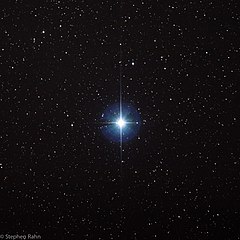Imagine the following dialog.
“Logarithms are usually taken to integer bases, like 2 or 10.”
“What about e?”
“OK, that’s an example of an irrational base, but it’s the only one.”
“Decibels are logarithms to base 101/10.”
“Really?!”
“Yeah, you can read about this here.”
“That’s weird. But logarithms are always take to bases bigger than 1.”
“Au contraire. Bases can be less than one, not just in theory but in practice.”
This post expands on the dialog above, especially the last line. We will show that stellar magnitude is a logarithm to a base smaller than 1.
Decibles are defined as 10 times the log base 10. But as explained here, decibels are not just a multiple of a logarithm, they are logarithms, logarithms base 101/10.
Irrational bases
Raising a musical pitch a half-step (semitone) multiplies its frequency by 21/12, and so raising it 12 half-steps doubles it, raising it an octave. Semitones are logarithms base 21/12.
So here are two examples of irrational bases for logarithms: decibels are logs base 1.2589 and semitones are logs base 1.0595.
Stellar magnitude

Stellar magnitude is strange for a couple reasons. First of all, the scale runs backward to what you might expect, with brighter objects having smaller magnitude. Perhaps stellar magnitude should be called stellar dimness. But the magnitude scale made more sense when it was limited to visible stars. The most visible starts were of the first category, the next most in the second category, and the least visible in the sixth category.
Second, stellar magnitude is defined so that a change in brightness of 100 corresponds to change in magnitude of 5. This seems arbitrary until you realize the intention was to fit a scale from 1 to 100 to the magnitude of visible stars. The scale seems strange now that we apply it to a wider variety of objects than naked eye astronomy.
If a star X is 100 times as bright as a star Y, then the magnitude of X is −5 times the magnitude of Y. The log base 10 of the brightness of X is twice the log base 10 of the magnitude of Y, so magnitude is −5/2 times log base 10 of brightness.
So stellar magnitude is a multiple of log base 10, like decibels.
Now
loga(x) = logb(x) / logb(a)
for any bases a and b. If we let b = 10, this says that a multiple k of base 10 is the same as the log base a where log10(a) = 1/k, so
a = 101/k.
For decibels, k = 10, so a = 101/10 = 1.2589. For stellar magnitude, k = −5/2, so a = 10−2/5 = 0.3981.
That is, stellar magnitude is logarithm base 0.3981.
To be more precise, we need a reference point. The star Vega (image above) has magnitude 0, so the magnitude of a star is the logarithm base 0.003162 of the ratio of the star’s brightness to the brightness of Vega.
Related posts
Image of Vega by Stephen Rahn via Wikipedia.

Boltzman’s definition of entropy takes a logarithm with base 10^10^22.498.
What about logarithms to imaginary/complex bases?